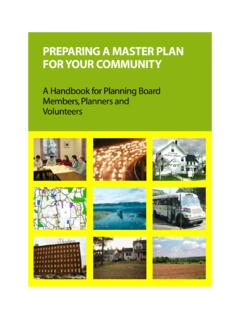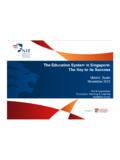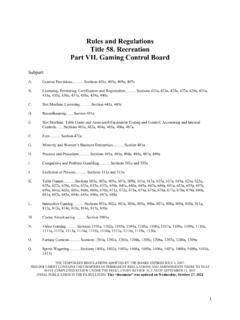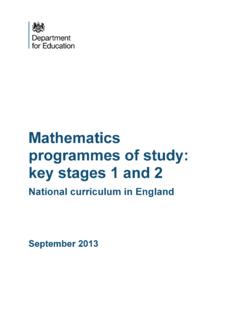Transcription of The national curriculum in England - Framework document
1 The national curriculum in England Framework document December 2014 2 Contents 1. Introduction 4 2. The school curriculum in England 5 3. The national curriculum in England 6 4. Inclusion 9 5. Numeracy and mathematics 10 6. Language and literacy 11 7. Programmes of study and attainment targets 13 English 14 Spoken language years 1 to 6 18 Key stage 1 year 1 20 Key stage 1 year 2 27 Lower key stage 2 years 3 and 4 34 Upper key stage 2 years 5 and 6 42 English Appendix 1: Spelling 50 Spelling work for year 1 51 Spelling work for year 2 56 Spelling work for years 3 and 4 60 Word list years 3 and 4 65 Spelling years 5 and 6 67 Word list years 5 and 6 72 International Phonetic Alphabet (non-statutory) 74 English Appendix 2.
2 Vocabulary, grammar and punctuation 75 Key stages 3 and 4 81 Glossary for the programmes of study for English (non-statutory) 89 Mathematics 108 Key stage 1 years 1 and 2 110 Year 1 programme of study 111 Year 2 programme of study 116 Lower key stage 2 years 3 and 4 122 Year 3 programme of study 123 Year 4 programme of study 129 3 Upper key stage 2 years 5 and 6 135 Year 5 programme of study 136 Year 6 programme of study 144 Mathematics Appendix 1: Examples of formal written methods for addition, subtraction, multiplication and division 151 Key stage 3 153 Key stage 4 160 Science 168 Key stage 1 170 Key stage 1 programme of study years 1 and 2 171 Year 1 programme of study 172 Year 2 programme of study 175 Lower key stage 2 years 3 and 4 178 Lower key stage 2 programme of study 179 Year 3 programme of study 181 Year 4 programme of study 185 Upper key stage 2 years 5 and 6 189 Upper key stage 2 programme of study 190 Year 5 programme of study 192 Year 6 programme of study 196 Key stage 3 200 Key stage 4 212 Art and design 225 Citizenship 227 Computing 230 Design and
3 Technology 234 Geography 240 History 245 Languages 252 Music 257 Physical education 260 1. Introduction 4 1. Introduction This document sets out the Framework for the national curriculum and includes: contextual information about both the overall school curriculum and the statutory national curriculum , including the statutory basis of the latter aims for the statutory national curriculum statements on inclusion, and on the development of pupils competence in numeracy and mathematics, language and literacy across the school curriculum programmes of study for all the national curriculum subjects.
4 2. The school curriculum in England 5 2. The school curriculum in England Every state-funded school must offer a curriculum which is balanced and broadly based1 and which: promotes the spiritual, moral, cultural, mental and physical development of pupils at the school and of society, and prepares pupils at the school for the opportunities, responsibilities and experiences of later life. The school curriculum comprises all learning and other experiences that each school plans for its pupils. The national curriculum forms one part of the school curriculum . All state schools are also required to make provision for a daily act of collective worship and must teach religious education to pupils at every key stage and sex and relationship education to pupils in secondary education.
5 Maintained schools in England are legally required to follow the statutory national curriculum which sets out in programmes of study, on the basis of key stages, subject content for those subjects that should be taught to all pupils. All schools must publish their school curriculum by subject and academic year All schools should make provision for personal, social, health and economic education (PSHE), drawing on good practice. Schools are also free to include other subjects or topics of their choice in planning and designing their own programme of education. 1 See Section 78 of the 2002 Education Act: which applies to all maintained schools.
6 Academies are also required to offer a broad and balanced curriculum in accordance with Section 1 of the 2010 Academies Act: 2 From September 2012, all schools are required to publish information in relation to each academic year, relating to the content of the school s curriculum for each subject and details about how additional information relating to the curriculum may be obtained: 3. The national curriculum in England 6 3. The national curriculum in England Aims The national curriculum provides pupils with an introduction to the essential knowledge that they need to be educated citizens.
7 It introduces pupils to the best that has been thought and said; and helps engender an appreciation of human creativity and achievement. The national curriculum is just one element in the education of every child. There is time and space in the school day and in each week, term and year to range beyond the national curriculum specifications. The national curriculum provides an outline of core knowledge around which teachers can develop exciting and stimulating lessons to promote the development of pupils knowledge, understanding and skills as part of the wider school curriculum .
8 Structure Pupils of compulsory school age in community and foundation schools, including community special schools and foundation special schools, and in voluntary aided and voluntary controlled schools, must follow the national curriculum . It is organised on the basis of four key stages3 and twelve subjects, classified in legal terms as core and other foundation subjects. The Secretary of State for Education is required to publish programmes of study for each national curriculum subject, setting out the matters, skills and processes to be taught at each key stage. Schools are free to choose how they organise their school day, as long as the content of the national curriculum programmes of study is taught to all pupils.
9 3 The key stage 2 programmes of study for English, mathematics and science are presented in this document as lower (years 3 and 4) and upper (years 5 and 6). This distinction is made as guidance for teachers and is not reflected in legislation. The legal requirement is to cover the content of the programmes of study for years 3 to 6 by the end of key stage 2. 3. The national curriculum in England 7 The structure of the national curriculum , in terms of which subjects are compulsory at each key stage, is set out in the table below.
10 Figure 1 Structure of the national curriculum Key stage 1 Key stage 2 Key stage 3 Key stage 4 Age 5 7 7 11 11 14 14 16 Year groups 1 2 3 6 7 9 10 11 Core subjects English Mathematics Science Foundation subjects Art and design Citizenship Computing Design and technology Languages4 Geography History Music Physical education All schools are also required to teach religious education at all key stages. Secondary schools must provide sex and relationship education.


















